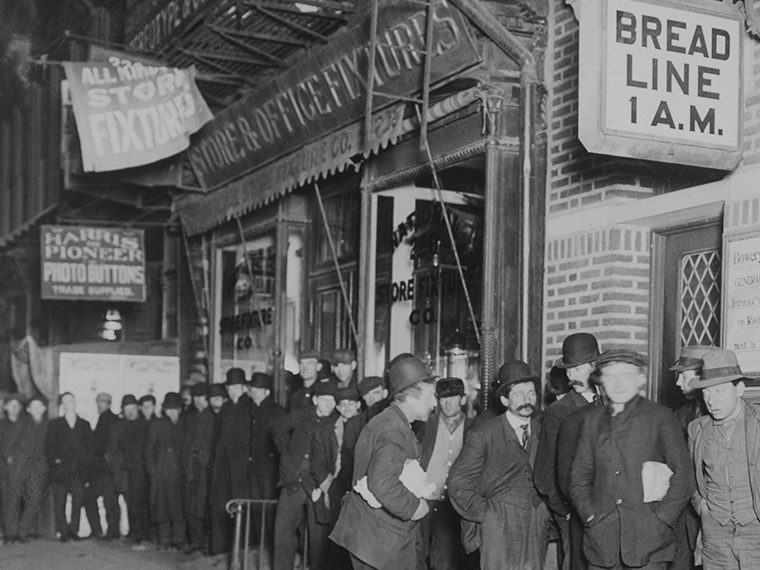Small firms in Peru shop nationwide for cheap credit, but loyalty runs two ways
In the highly concentrated and modernized U.S. banking industry, banks take in deposits from all over and then lend them out, mostly without regard to location, seeking the highest return. Mostly gone are the days when a local bank, flush with deposits, was forced to slash rates on loans to generate business.
But in the Peruvian economy, which is highly reliant on mining and the prices of mined commodities, the rise and fall of those prices produce temporary abundances of cash in local banks, and the banks still offer cut-rate loans to put these funds to work.
But the to-and-fro of commodity prices constantly in motion — copper is up while gold is down from its recent peak — destabilizes the relationship between banks and their borrowers. Even smaller companies will opt for the low-rate loans from a new bank, and relationships with a company’s original, local bank suffer. When companies get into trouble they no longer have a loyal financial backstop, leading to a greater likelihood of defaulted loans.
Opt In to the Review Monthly Email Update.
More Borrowing Options Can Jeopardize Credit in Future
Those are the conclusions of a paper from UCLA Anderson’s Mark Garmaise and Universidad de Piura’s Gabriel Natividad. The paper, published in the Journal of Financial and Quantitative Analysis, finds that local commodity windfalls lead to lower interest rates and an increase in borrowing in the province where the windfall occurs. Companies that operate in the province but don’t already borrow there will take out new loans in the region, reducing their credit needs in their home provinces. These companies later suffer increased defaults and loans referred to the judicial system for collection.
“Firm policies that increase the set of potential borrowing options today may jeopardize future access to credit in the face of darkening prospects,” the authors write.
The authors examined business lending to Peruvian companies from January 2001 to June 2012 to see how changes in commodity prices affected local interest rates, and how differences in those rates influenced companies’ borrowing decisions in the provinces they operated in.
Their sample included nearly 6,000 companies that operated and borrowed in more than one of Peru’s 196 provinces, along with more than 17,000 multiprovince firms that borrowed only in their home region. The companies are mostly small, with a median of eight employees, and they had an average monthly loan balance of about 405,000 Peruvian soles, or less than $130,000.
In increasingly global financial markets, interest rates will rarely vary greatly from one locale to another. But research suggests that even in highly integrated markets like the U.S., surges in local income — from oil and natural gas discoveries, for example — can increase the funds available for lending and lower interest rates for banks operating in the boom communities. This can especially affect hard-to-securitize assets like small business loans.
In Peru’s resource-based economy, changes in prices for the country’s leading export commodities — such as copper, gold, silver and other metals — will impact provinces differently depending on the minerals they produce. A copper-mining region will benefit from an increase in the metal’s prices, but a gold-producing area might not.
Borrowing from Banks in New Locale Can Be Costly
When prices for a province’s local commodity rise, the increased mining profits presumably are deposited in local bank branches, which then make the funds available for loans at reduced interest rates to small businesses in the region. This, the study found, stimulates borrowing by companies operating in all industries, not just mining. For every $18 million in additional commodity revenue a province receives, the analysis showed, available credit increases by 1.7% and short-term interest rates are reduced by 24 basis points.
Companies aren’t taking advantage of the windfall to splurge on cheap credit and increase their debt load. Instead, they scale back their borrowing from bank branches in provinces where rates remain higher. The paper finds that each $18 million increase in a windfall in a province leads to a 5.4% increase in local borrowing. In provinces that don’t get a commodity windfall, local borrowing declines 4.3%.
And when a company scales back its borrowing, its largest, most important lenders get hit with the biggest decline. These banks, the authors write, would be the main source of emergency loans when borrowers run into trouble. Neglecting this relationship in the search for cheap credit means those funds might not be available to rescue the company when difficulties appear.
In the study, that proved to be the case. Companies that chase commodity windfalls and extend their borrowing to a new set of provinces later suffer more severe loan delinquencies and are more likely to have their debts referred to the judicial system for collection, the authors found.
The danger is most pronounced for companies that are younger or have fewer tangible assets and as a result are more dependent on established relationships with existing lenders with greater knowledge of their business.
“Borrowing in a new province does not lead merely to a temporary disruption in a firm’s relationships with its existing lenders,” the authors write. “It leads to permanent relationship dissolutions.”
Why Companies Run into Trouble After Borrowing in New Area
To consider the possibility that there could be other reasons companies run into financial trouble after seeking a new source of loans, the authors analyzed a handful of alternative explanations. For example, it could be that companies, drawn to booming provinces, make bad investment decisions and suffer loan defaults in the eventual bust.
One way to test this is to look at two sets of companies operating in a province that experiences a mining boom — one that already borrows within the province, and one that borrows there for the first time to take advantage of the drop in interest rates. The study finds that the windfall doesn’t affect the first group’s future borrowing nor does it cause their existing lenders to cut off credit. Only those firms that borrow in a booming province for the first time suffer an increased likelihood of serious default.
“Only the firms that initiate borrowing in a new area exhibit negative future delinquency outcomes,” the authors write.
They stress that companies aren’t wrong to seek out lending in new, thriving areas. Yes, taking advantage of the cheaper loans comes at the expense of their existing lending relationships. But, Garmaise says in an email, “that seems like a reasonable trade-off.”
Featured Faculty
-
Mark J. Garmaise
Professor of Finance
About the Research
Garmaise, M., and Natividad, G. (2020). Financial Flexibility: At What Cost? Journal of Financial and Quantitative Analysis, 56(1), 249-282. https://doi.org/10.1017/S0022109020000010






